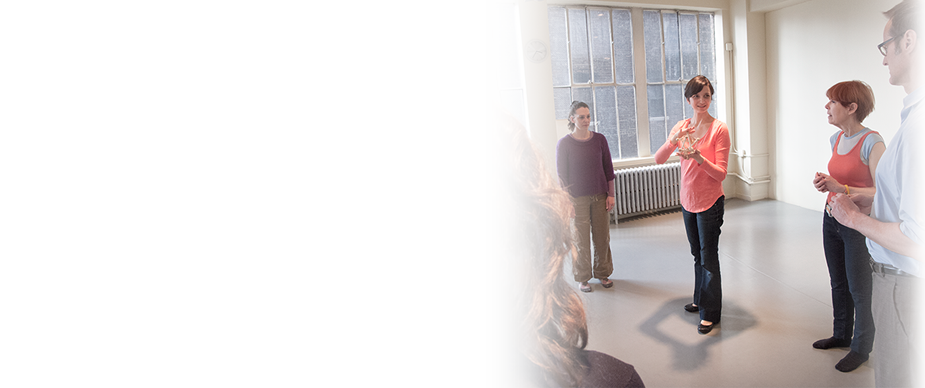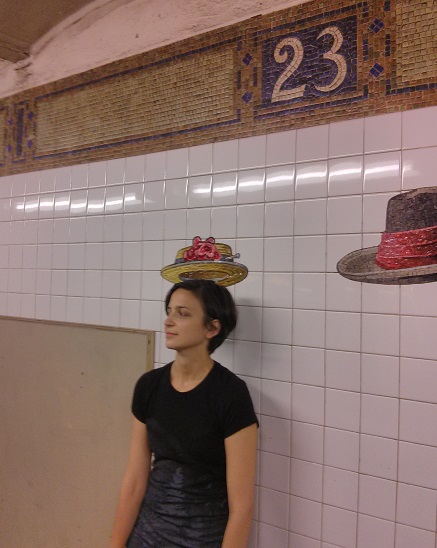Improve Your Posture During Rush Hour - Alexander Technique on the Train
/Did you find yourself, tired and sinking down or tense and impatient while waiting for your train? Want to make the most of your subway ride? Improve your posture and breathing and feel more relaxed as you ride.
You burst onto a morning rush-hour train and snagged the last seat just before the other person rushing toward it. Whether you're feeling proud of yourself or slightly ashamed (yet relieved to have a chance to snooze) here's an alternative to snoozing or playing Candy Crush. Do a bit of seated constructive rest.
Aside from becoming more mindful and proactive about how you use your body throughout your day, this is one daily practice that you take time out for and it's is considered a staple of making progress in improving your posture with The Alexander Technique. It is usually done in the semi-supine position, lying on the floor with the knees bent and the feet flat. Turn this position 90 degrees and you have something close to sitting. It's not a replacement for the lying down version, but you can also use your time on the subway to do a modified version that might bring you into a meeting, interview, rehearsal, whatever is on the other end of your ride, in a more relaxed and energized state (not to mention appearing more upright, present, confident, and alert to the people you interact with).
-Start by sitting all the way back in your seat
-Notice the feeling of the back of the seat on your back, the bottom of the seat on your bottom, and your feet on the floor.
-Bring your attention to the top of your head (scratch it lightly if you aren't sure your attention is there, then take your hand away and notice where you feel the sensation of having scratched your head). Imagine the top of your head aiming up toward the ceiling. Just imagine this. It may seem like you are not doing anything and you might be tempted to lift your chin or press your chin toward your chest or tighten your jaw. Instead, just allow your head and neck to stay still and neutral and imagine your head aiming up.
-Bring your attention back to your points of contact with the seat and the floor and if you've pulled away from them at all, gently allow yourself to make more contact again.
-Use the contact with the back of the seat as a stimulus for your back to widen. Remember that your back ribs should move as well as your front ribs when you breathe. Don't try to manipulate your breathing, but instead see if you feel more relaxed and get fuller breaths if you allow your back to widen as it contacts the seat.
-Imagine your legs releasing away from the creases in the fronts of your hip joints out toward your knees. A helpful image can be thinking of water flowing along the tops of the thighs out to the knees.
-Imagine space between your sides and your inner arms. Even if you're squeezed in between two people, imagine that there is space there.
-Notice your hands and feet and whether or not you are tensing them. Place your hands, palms down, on the tops of your thighs and think (just think) of your fingers relaxing out toward the finger tips and your hands releasing away from your wrists. Allow your feet to contact the floor more without pushing them down.
-Now go back to the thought of the head releasing up toward the ceiling and start that thought at the very base of your spine and think of aiming the head up along the spine from that point so that the spine supports the head, rather than the head dragging it down.
You can stop here, go through the steps again or mix them up a bit. Make sure that you aren't gripping anywhere or holding your breath to think the directions laid out here. Stay alert as you go through it, keeping your eyes open.
And after your ride home, lie on the floor and check out my constructive rest audio guide.
Check in next month on The Posture Police Blotter for some tips for the days when you're slow to grab a seat or there are no seats left to grab.































